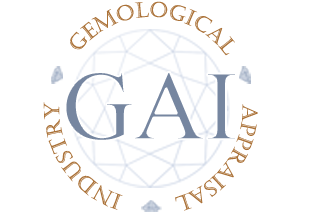Diamond Education
CLARITY:
A diamond's clarity is the quality of the diamond relating to the existence and visual appearance of the internal characteristics of the diamond; called inclusions, and surface characteristic called blemishes. Most diamonds are formed in extreme circumstances from primeval carbon deep in the earth's mantle at about 500,000 to 2 million feet below the surface. The extreme heat and pressure that diamonds undergo during their "birth" can cause unique "birthmarks" that affect their clarity.

COLOR:
A diamond's color has a significant impact on its appearance. With its many facets, a colorless diamond reflects light into a spectrum of hues, a characteristic often referred to as "fire". In a white diamond, the presence of a yellow tint will lower the price of a diamond. The less body color in a white diamond, the more true color it will reflect, and thus the greater its value.

SHAPE:
When selecting a diamond, shape is one of the most important factors to consider. Round diamonds have long been the most popular, although many modern consumers prefer alternative shapes, including emerald, princess, radiant, and asscher, among others.

CUT:
A diamond's cut grade is about how well a diamond's facets interact with light. Cut quality refers to the proportions, symmetry and polish which ultimately results in the performance of a diamond. A diamond's cut has three primary effects on appearance: brilliance (the brightness created by the combination of all the white light reflections from the surface and the inside of a polished diamond), fire (the dispersion of light into the colors of the visible spectrum, seen as flashes of color), and scintillation (the flashes of light and dark, or sparkle, when a diamond or light source is moved).

ANATOMY:

Crown — The portion of the diamond that sits above the girdle, including:
- Table –the flat surface at the top of the diamond.
- Star Facets — Facets adjacent to the table, directing light down to the girdle and lower facets.
- Bezel Facets — Kite-shaped facets between the star facets and the upper girdle facets.
- Upper Girdle Facets — Lowest facets of the crown, sit between the bezel facets and the girdle.

Girdle — The diamond’s outer edge, where the crown and pavilion meet. Either faceted or smooth.

- Pavilion — The portion of the diamond that sits below the girdle, including:
- Lower Girdle Facets — The facets just below and adjacent to the girdle.
- Pavilion Facets — The lowest facets, those just below and adjacent to the lower girdle facets
- Culet — The bottom of the diamond, this can either be the point at the bottom of the diamond or a small facet parallel to the table.
CARAT WEIGHT:
A carat (ct.) is the unit of measurement specifically used to describe the weight of a diamond (or other gemstones). A single
carat is divided into 100 points. For example: 0.33 carats is generally expressed as 33 points, or 1/3 of a carat. Because large
diamonds are much rarer in nature than smaller ones, the diamond value increases exponentially for certain thresholds of diamond
carat weights. A 1.00-carat diamond will cost more than twice as much as a 0.50-carat diamond of comparable quality.

